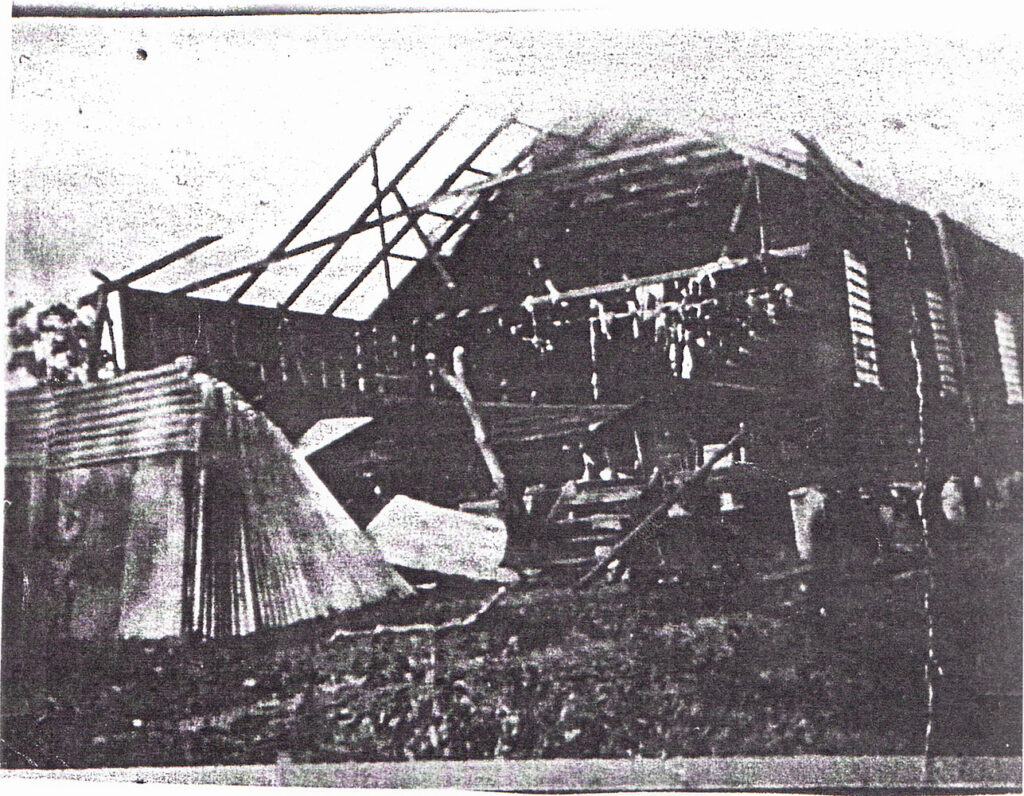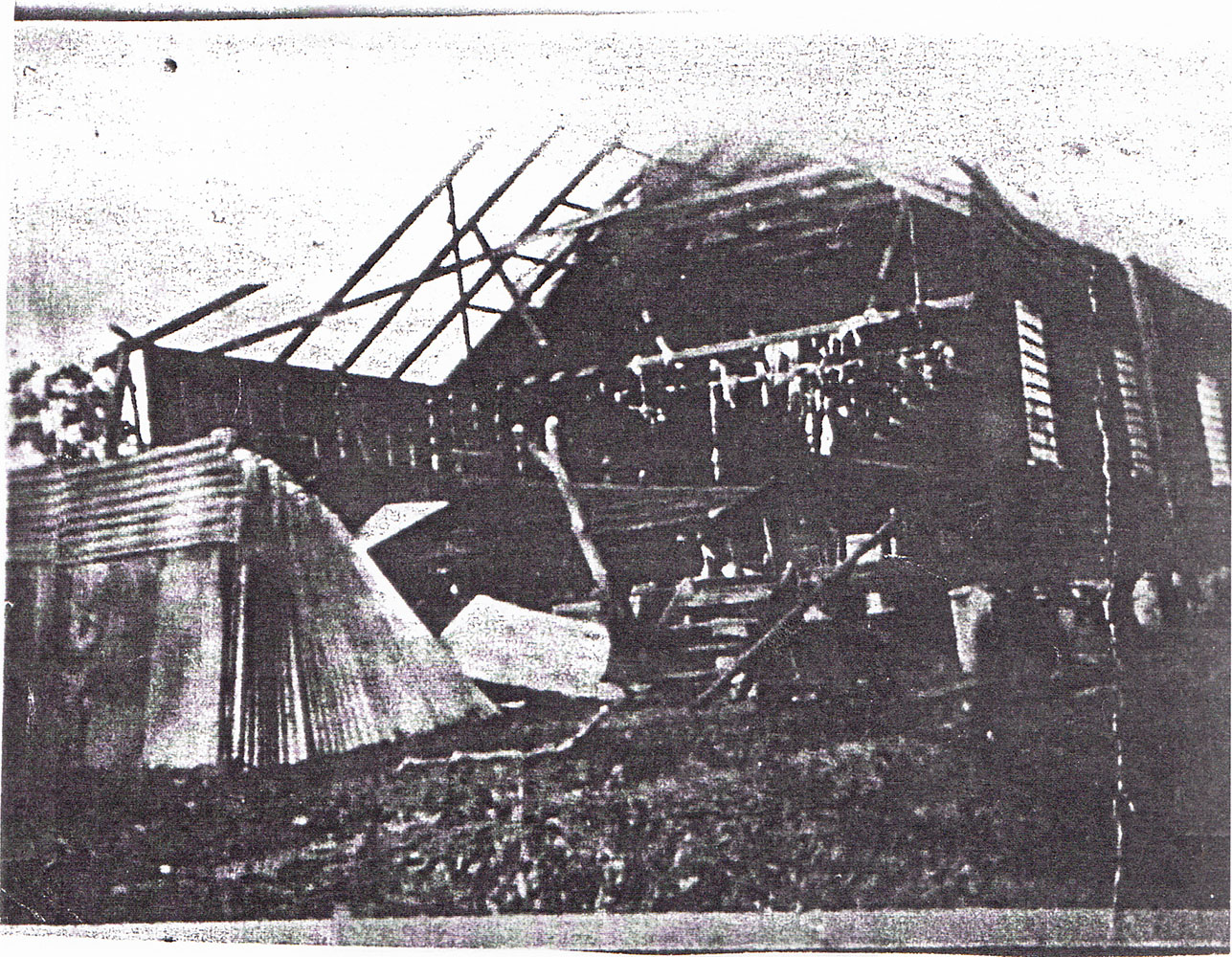History of Tambourine & Surrounding Region – ‘Tamborine’s Buildings – The Hall’ – Part 2
In this edition, we are featuring an early structure of Tamborine – ‘The Tamborine Memorial Hall’:
With the establishment of the new Committee in 1929, the future of the hall and the desirability or otherwise of moving it closer to the township was discussed but the idea lapsed well into the 1930. In the meantime the Committee was heavily involved in planning a Motor Gymkhana, a rodeo, a maiden campdraft, and the usual dances. The maiden campdraft and rodeo took a large amount of organising and detailed planning including type of events and prizes and medals for each event. Sufficient cattle needed to be donated and the number and type of booths had to be decided. The Ladies Committee was involved from the outset, a working bee was held to cut and haul rails, and W. Massie was offered £2 to operate the liquor booth. This was the first event where financial details were officially recorded showing income was £86.6.0, expenses were £29.1.6, leaving a profit of £28.2.3 for the Hall account.
A special meeting was called in April 1930 to discuss the position of the hall. Two main possibilities were decided upon: the first to completely dismantle the hall and reassemble it on a site 3/4 of a mile from its present location, or second to move the whole structure bodily. Advertisements were placed in local newspapers calling for tenders. There were also two proposals for land for the new site: one was from the Yore Estate and the other from the Walsh Bros.
Finally, the Yore Estate proposal was chosen although there was the possibility that Mr Mantova might not be able to supply electric light to the block. Mr B Geissmann submitted a tender of £60 to pull down the hall and re-erect on the new site. This was accepted by the Committee. A public meeting was called of which over 50 people attended on 19 July to further endorse the decisions made by the Committee. But the continuing effects of the Great Depression lead to a decrease in fund-raising activities and the idea of moving the hall waned.
As well as the Tamborine Hall Committee, other organisations in the district were also affected including: the Tamborine Ambulance Benefits Committee, Tamborine Jockey Club, Tamborine Cricket Club, and Tamborine School Committee. The Tamborine Hall Committee members were elected to a period of two years and there was never a problem in finding residents to serve on the committee.
In the late afternoon of Friday 15 November 1940, a cyclonic type storm caused severe damage to the hall rendering it useless for functions until repairs could be made. The piano was also damaged (repairs would cost £4.15.7 but it was subsequently sold for £8). The church building next door was left completely free of damage. This event had one unusual result – after the World War 2 broke out in 1939, residents usually farewelled the men who volunteered in the all, but as these could not be held at the hall at the time, some farewells were held in the goods shed at Tamborine Railway Station. (The Hall Committee had previously decided prior to the cyclone that for the duration of the war, all patriotic functions held in the hall be free of rent but to pay for lighting.)

The discussion of moving the position of the hall came up from time to time and towards the end of 1938, a block of land near Crisp’s butcher shop was investigated as well as the Yore Estate once again. Both considered too high in price, of £20 and £32.10.0 respectively. A letter from AT and J and Miss Martin offered a quarter acre for £5 (where the Tamborine Rural Fire Station stands today) which was accepted on the condition that the committee would be responsible for fencing the site. One resident offered to supply the fence posts and another offered his truck to cart them. It is recorded that Mr Mantova made an offer to pull the Hall down and transport it to the new site at a cost of £6 (?) which was accepted. A tender received from Mr Fenwick for £78.10.0 for its re-erection was renegotiated and a reduction was achieved.
The Secretary purchased all the materials and arranged for the floor to be sanded. Construction apparently commenced in 1941 with the official opening of the new hall to take place on 26 April 1941. The Committee also made a momentous decision in April and the newly positioned hall would now be known as the ‘Tamborine Memorial Hall’. A replacement piano was purchased for £35.
The Secretary received a letter from the Australian Defence Canteens Service dated 17 July 1942 advising they would be taking over possession of the hall under National Security Regulations, with takeover date to be 19 July 1942. After further correspondence, the Army offered 15/- per week as rent and the agreement continued until 25 November 1943. During this period, the Hall was used as a major storage facility and Committee meetings had to be held at J Martin’s house. The Hall was also damaged by the Army amounting to for £76.15.0 but is unclear if paid.
In the following edition, we will continue the tale of evolution of the Tamborine Memorial Hall. Stay tuned to see the story unfold!
